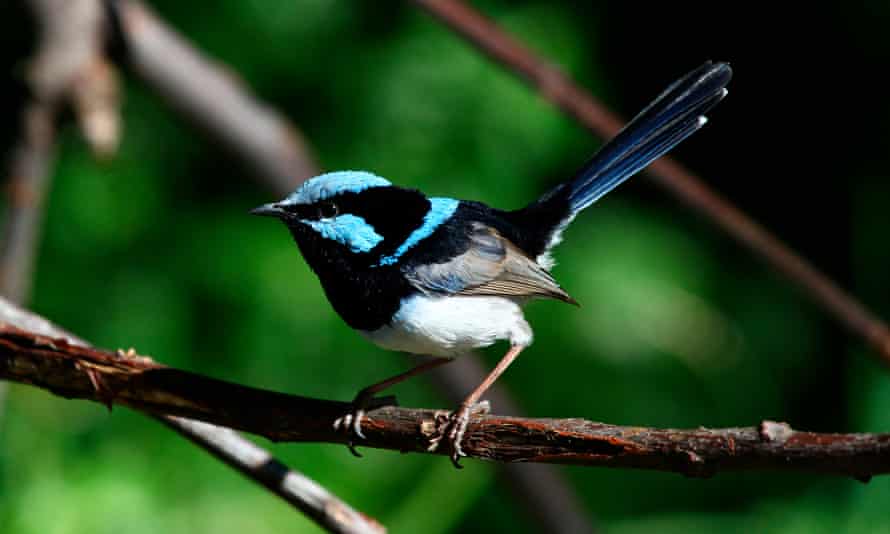‘Tiny little balls of pure joy’: why the superb fairywren took our 2021 bird of the year
With their glorious blue plumage, these common urban birds have been a comfort while we’ve been at home during the pandemic

The Guardian/BirdLife Australia 2021 bird of the year poll ended with the superb fairywren coming out on top.
While at first the victory had me crying “beauty contest!”, it speaks to our desire for small moments of joy in our daily life, as we’re restricted to the confines of our own homes.
Superb fairywrens, with their glorious blue plumage, can be seen darting between the dense shrubbery in the gardens and parks of almost every Australian capital city.
For the superb fairywren voter and urban ecologist Kylie Soanes, they’ve been a comfort throughout the pandemic.
“I’ve been seeing a lot of the posts on Twitter saying ‘Oh it’s a common bird. Why couldn’t something more special win? They’re not even the best fairywren’,” Soanes says. “But they’re these tiny little balls of pure joy that have managed to hang on in our cities and delight as they flutter past you on your way to work or you see them hopping around a train station. They’re always busy.”
For Birdlife Australia’s Sean Dooley it’s not just their colour that secured victory, but also their demeanour. “The blue is dazzling. It shimmers, it’s not just blue, it’s various shades of blue that shimmer in the light. And while female birds don’t have that brightness, they hold themselves in a certain way. The way they hop around with their tails aloft, it gives them attitude and makes them seem cheeky.”
Early in the days of the pandemic, the #BirdingFromHome hashtag took off and had more people searching for a connection to nature in their backyard. “For a huge number of us it’s made us really look around and ask who we’re sharing these spaces with and I think that’s why fairywrens have come to the fore,” Soanes says.
There’s also a lot more to these birds than their insanely good looks. They’re really good fathers. Research published in 2017 found male superb fairywrens that sang to their chicks while still in the egg produced more attentive offspring. They’ve been known to listen in on other birds to detect calls of danger, which shows a high level of awareness. And there is their “scandalous” love lives.
“Back in the day we thought they had this supreme marital bliss,” Soanes says. “The male and female mate for life and it’s all wonderful. But then scientists found out through genetic research that an individual fairy wren’s nests can be made up of eggs from multiple different fathers. Turns out the females, just before dawn, sneak off for what’s called a ‘pre-dawn foray’ and have a little sexy rendezvous with the neighbouring male fairywren. They’re quite scandalous.”
In September, Soanes launched the Super City Wrens citizen science project, calling on the public to record sightings of superb fairywrens around Melbourne. This came after concerning data published by BirdLife Australia found a decline in sightings of fairywrens around Australia’s capital cities.
“In Melbourne and Perth, the reporting rates of fairywrens have almost halved over this time,” says Dooley. “It says there are changes happening in our urban areas and around the fringes of our big towns and cities, and it’s linked to fairywrens losing habitat.
While you may still be asking why a “common” bird should win, Soanes says it’s important to take notice of these birds as well.
“What happens with these common urban birds is we take them for granted, and we think, ‘oh yes, they’ll be fine, there are heaps of them’. Then, all of a sudden, they’re not and they’re gone and we’re left scratching our heads. That’s what we’re trying to prevent from happening.”